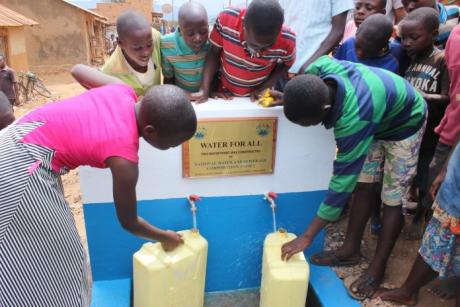For us to develop our economy while keeping other factors constant, there is a need for improved commercialized agriculture. This is in line with the President’s wealth creation message.
Recently, President Museveni launched countrywide wealth creation tours to mobilize, sensitize and rally support for commercialization of agriculture in our country. The move is aimed at transforming the lives of our people who are still in the poverty line.
Commercialization of agriculture means the production of agricultural crops for sale and not for home consumption only. It becomes the necessity for Uganda’s agriculture because it helps in fighting poverty from the rural areas by way of improving incomes and livelihoods of the farmers hence raising standards of living in our country.
For commercialization to take place, infrastructure development especially the transport sector and storage facilities are paramount. The commercialization of agriculture will add an element of stability to Uganda’s rural economy. It will check the growth of the labor market, land, input, credit and significantly increases food production thus guaranteeing food security in the country. When a country like Uganda has enough food, it’s economically stable.
According to the statistics, 68% of Ugandans derive their livelihoods through agriculture. Therefore, to take Uganda to the commercialization economy, the government introduced the National Agricultural Advisory Services (NAADS) program which was later transformed to Operation Wealth Creation (OWC). This program aims at distributing improved seeds, inputs, and technical advisory services to farmers to boost food production.
Since the introduction of NAADS, farmers have embraced and livelihoods have changed. Many farmers across the region are testifying how NAADS has transformed their lives. Parents are now able to educate their children and meet all the necessities. In the Cocoa growing areas, farmers are now reaping millions of shillings. The government mobilized and supplied seedlings to the farmers. As we speak, 27 districts in Uganda are now engaged in cocoa-growing for commercial gains.
Following the introduction of NAADS and OWC, cocoa farmers now earn Uganda over sh2.1 trillion per annum and are likely to double following the distribution of over 18 million cocoa seedlings to the farmers in the beneficiary districts. So, there is a reason to smile.
In situations where NAADS is not directly involved with farmers, it provides avenues for them to sell their products and in the end turning them from subsistence to commercial farmers. In the near future, they can start looking beyond the local market & produce for export bringing in foreign exchange. The government now needs to conduct surveys and find out which crops are suitable in the respective regions.
The 68% population also needs to listen and follow advisory services from extension workers to reap more. Extension workers should play great role in expounding the four-acre model farming system rooted by the President to farmers in his wealth creation message. During the planting season, the government through NAADS program should listen and supply demand-driven quality supplies to communities to avoid negativity from farmers.
In Nwoya district, over 3,000 farmers are set to benefit from sh19bn 12-ton Nwoya fruit processing factory. The Government of Uganda through the NAADS program this Financial Year 2019/2020 hopes to complete this fruit processing. The factory will comprise of 8 metric tons for mangoes, while oranges and guavas will each have an installed capacity of two metric tons per hour.
The NAADS secretariat is supporting farmers with seedlings, which is important in the establishment of the fruit factory in fulfillment of the President’s pledge. The government has constructed a number of fruit processing factories that are aimed at boosting farmers’ productivity.
Agriculture is the main contributor to Uganda’s economy and it’s made up of almost a quarter of the gross domestic product. Agricultural production accounts for almost 70% of the global freshwater extractions hence water is considered an essential element in both socioeconomic and environmental development.
Commercialization of agriculture in India began during the British rule not to feed the industries of India because India was far behind in industrial development as compared to Britain, France, Belgium and many other European countries of the eighteenth century. It was done primarily to feed the British industries for commercial purposes.
As we are all aware that agriculture is the backbone of our country, farmers should be enticed to engage in commercial agriculture by attractive markets. If farmers embrace the commercialization of agriculture, Uganda will achieve middle-income status.
The writer is a Communications Assistant at the Government Citizen Interaction Centre (GCIC), Ministry of ICT & National Guidance.
NOTE: This Article was first published in the Nile Post






Comments